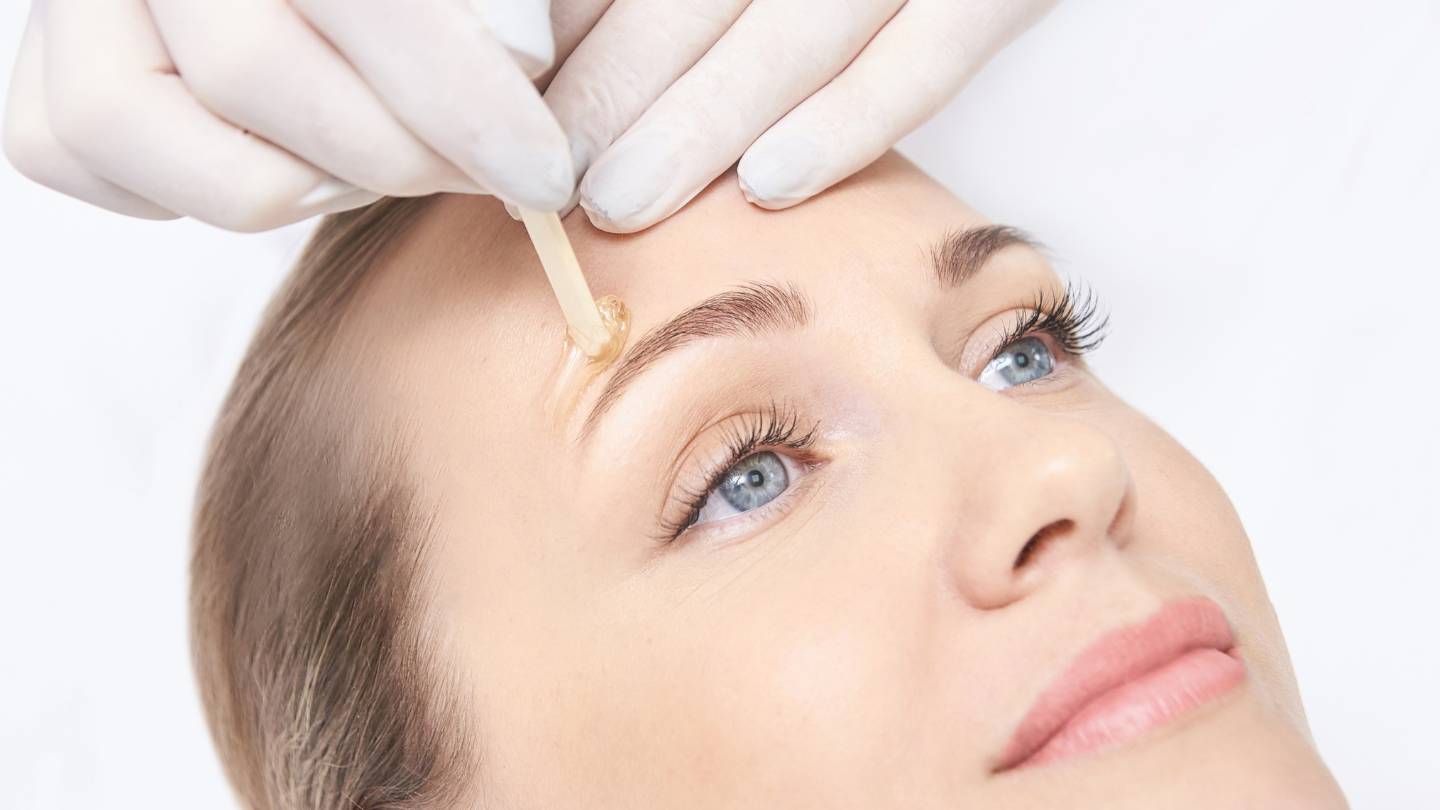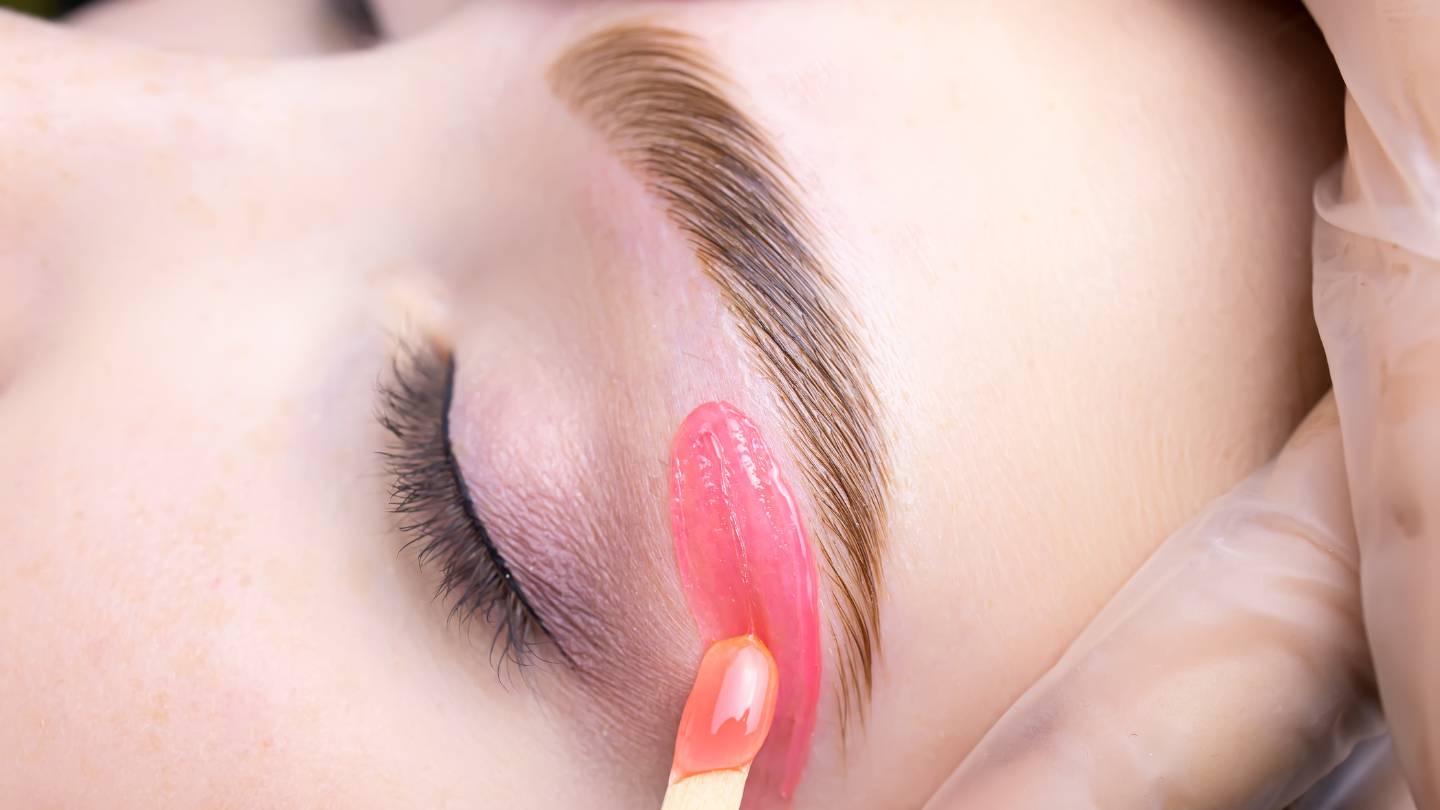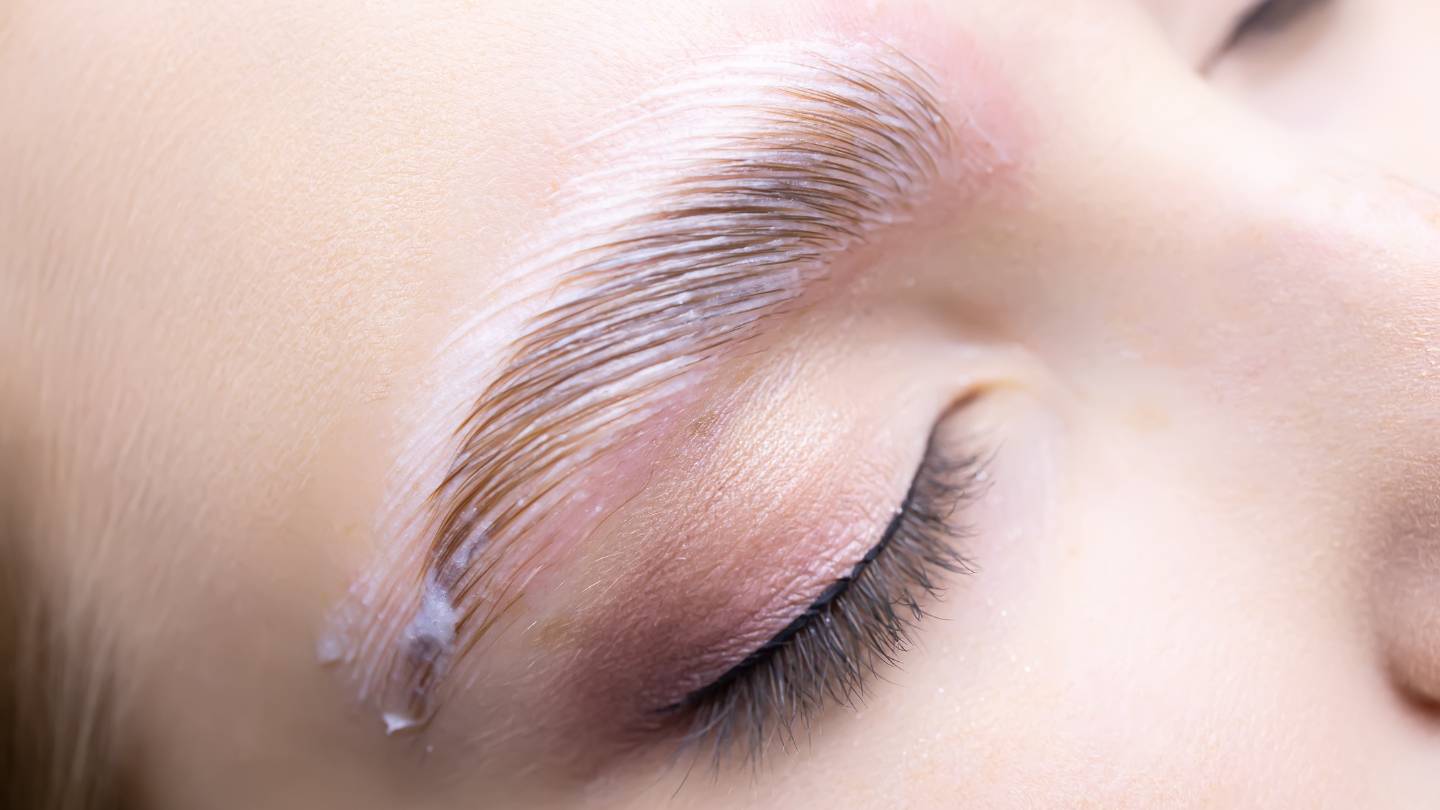The capacity of feathering—also called microblading or feather touch brows—to produce defined eyebrows that look natural has made it a popular procedure. People who have oily skin frequently question if this method is appropriate for them since they are worried about the duration and preservation of pigment.
The fact is, people with oily skin can benefit much from feathering provided they approach the procedure with knowledge and appropriate care, even though it can present some challenges. Great, long-lasting results can be achieved by using appropriate techniques and pigments while also understanding the unique requirements of oily skin.
We'll traverse the nuances of feathering for oily skin in this in-depth explanation. Discover the difficulties caused by overproduction of oil and how knowledgeable experts overcome these difficulties to guarantee the best results. Examine specific methods, pigment selections, and post-treatment protocols intended to prolong the life of feathery eyebrows on oily skin.
Understanding Oily Skin
To maintain moisture, all skin types require varying amounts of oil. Sebaceous glands, although dispersed throughout the body, are most abundant on the scalp and face, where they produce this oil.
A fluid known as sebum is secreted by these glands. For the most part, sebum does a good job of hydrating and lubricating the skin. Additionally, it has the potential to remove debris and dead skin cells from your pores.
Because everyone makes a different amount of oil, your skin type is determined by that. Too many sebaceous glands can make too much sebum, which can make your skin look shiny and cause pores to get plugged. This is a big reason why people with oily skin often face problems like acne.
How Can You Tell If Your Skin Is Oily?
When you have oily skin, you'll notice a few things. You probably have oily skin if you notice that your face is glossy and 'greasy' at the end of the day, or if your makeup can "slip off' your face.
Pay close attention to your T-zone, which is the area from your forehead to your nose. This area usually gets the most dirty because it has more oil glands that are working and may be making too much sebum. Your T-zone may be oily, but your lips and chin may be normal or dry. This means you may have combination skin.
How Does Oily Skin Occur?
If you have oily skin, it's probably because your parents passed it on to you; after all, oily skin tends to run in families. Because of this, changing your skin type is usually not an option.
But there are a lot of different things that might lead to oil buildup. Increasing sebum production is a common side effect of hormonal changes that occur during adolescence, pregnancy, menstruation, and menopause in certain women. The reason behind this is that the sebaceous glands are more active at certain times.
Everything About Oily Skin Feathered
Those who have been following the latest trends in the cosmetics industry are undoubtedly familiar with microblading eyebrows. This wildly popular method of permanent cosmetics simultaneously creates the appearance of full, natural eyebrows. Numerous individuals who grew weary of daily brow filling have found the procedure to be a fantasy come true.
Is It Possible To Microblade Oily Skin?
Yes, it is possible to microblade oily skin, but there are certain considerations. Microblading on oily skin usually lasts less time and is more difficult to obtain crisp, defined strokes. As a result, powder brows are a superior PMU option for oily face and big pores. However, if you choose an artist that has a lot of expertise microblading oily skin and utilises adequate pigments, you should be fine.
What Impact Does Oily Skin Have on Feathering?
When trying to feather oily skin, you may encounter the following issues:
- Some skin types might not have lines that are as clear and sharp. The colour might get a little blurry, making the strokes look bigger than they really are.
- Because sebum pulls the pigments out of the skin, you may require touch-ups more frequently, which may add up quickly and cost a pretty penny.
Are These Issues Preventable?
Don't lose hope just yet; professional microblading artists are well-versed in accommodating a wide range of skin tones. Skilled painters will take their time and not produce too many strokes in the first session. In this manner, the brushstrokes will not blend or appear smudged, regardless of how much they spread.
Your artist will evaluate your skin's reaction to the pigment before applying a second series of strokes to fill in any gaps when you return for the touch-up.
What Is The Duration Of Feathering On Oily Skin?
Your microbladed brows should last around a year, provided you go to a specialist who is familiar with oily skin and can tailor the procedure and colour selection to your skin type.
But keep in mind that you also have a role in the outcome because the care you receive during the recovery phase is just as crucial as the treatment itself. Your post-healing behaviour will also determine how long your brows last because some skincare products and certain hobbies, like swimming in the ocean, can hasten the fading process.
If you see that your eyebrows are going away, you should get a touch-up. The artist might have to start from scratch if you wait too long, instead of just making a quick fix. You should know that if you get microblading, you will likely have to do it more often than people with dry skin. This can add up to a lot of money over time.
Do Machine Brows Outperform Feathering Oily Skin?
Machine strokes or shading, rather than manual microblading, is typically recommended for oily skin. The use of a nano needle machine to create brows has led some artists to argue that this method is superior since the resulting strokes are more defined.
Experienced microbladers of oily skin have found that including machine shading into their technique makes the shade effect last longer and allows for longer periods between touch-ups, making it an ideal choice for oily skin. A combo brow is a brow style that combines machine shading with hand-drawn strokes.
You could also try treatments like ombre or powder brows, which, because of how they are applied, last much longer on oily skin than microblading.
Feathering Aftercare For Oily Skin
Because feathering reaches slightly deeper than the epidermis, your skin type should also be considered. Why? Reason being, post-procedure skin healing is conditional on your skin type. The pigment's fading rate is likewise affected by it.
Normal, oily, dry, and mixed skin are the four main types. Also, people with oily skin are often hesitant to try microblading because they think it might not work for them. But don't worry—it does! In other words, you can still make that microblading appointment. And there are steps you can take for microblading treatment for oily skin to make sure the colour lasts a long time.
Types of Skin and Their Healing Process
First, we'll take a look at the post-microblading healing process for various skin types. By doing so, you can learn how the healing process is influenced by your skin type. Also, why newly-browned individuals with oily skin may need to be particularly careful with them.
Normal Skin
People with normal skin (skin that doesn't break out) heal evenly, and the colour will stay for about a week. It will be about a year or a year and a half before it needs to be touched up again.
Dry Skin
Dry skin has holes that are almost impossible to see. Should your skin feel tight and flake during the day, then you probably have dry skin. Dry skin, on the other hand, improves quickly. It also keeps the colour of the microblading makeup the longest, for at least one and a half years. This is because dry skin doesn't make as many oils, which water down the colour.
Combination Skin
When it comes to healing, combination skin behaves just like normal or slightly oily skin. The reason behind this is because oiliness in the eyebrow area is rather typical.
Oily Skin
Naturally more hydrated and looking great as you age, oily skin is a sign of healthy skin. But too much oil could make your pores clog up quickly. Pores are often bigger on oily skin types. However, with a touch of oiliness, the skin will recover more normally. In contrast, the pigment will appear more diffuse on oily skin.
Top Oily Skin Feathering Tips
It's likely something you hear a lot: feathering shouldn't be done on sticky skin. There's some sense in that. If you feather on oily skin, it may take twice as long to heal and fade. You can't just cut the client's bill in half since you're still using the same amount of time, effort, and colour. You can always turn away people whose skin is too oily if you want to. After all, you only want what's best for them. They feel like they're getting half of what they pay for.
Reasons to Avoid Feathering on Oily Skin
When skin is oily, the ink doesn't stay put as well. Because of this, healing periods and fading are both accelerated. Because of that, some clients will require more touch-ups than others. Customers with oily skin, in particular, may only get a year's worth of gorgeous brows before they have to get another touch-up.
In comparison, other customers may anticipate permanent brows for as long as three years. Strokes won't appear as sharp as they would on someone else's skin since the ink pigments are more prone to spread. Here are a few things to keep in mind when feathering over oily skin:
- Use lines that are a little deeper. Not so deep that it hurts the skin, but just deep enough that the colour of the ink is really buried in the skin.
- It is recommended to use ink pigments that are organic. It is usually advised to utilise organic ink pigments in particular instances, such as when dealing with clients who have oily skin. The customer is safe from any potential danger because these pigments are all-natural. Additionally, because they are derived from organic sources, they are typically gentler on human skin.
- Adopt tools and apparatus of superior quality. Because of the tendency of moist skin to distribute the pigment, precise strokes are crucial. Preserve the integrity of your equipment and tools.
Tips for Oily Skin Clients
Keep an open mind: they might not be thrilled with how microblading looks on their skin. Here are some suggestions to assist kids cope, nevertheless, if permanent brows are really important to them:
Control What You Anticipate
We apologise, but it needs to be said again. When you feather on oily skin, you get half the advantages for the whole price.
Get Yourself Set Up for Aftercare
Some post-treatment steps may be different for oily skin types compared to regular skin types. While the overall microblading aftercare guidance is available here, here are a few specific pieces of advice:
- For at least ten days after treatment, avoid getting any liquids on the treated region, including water, perspiration, and other similar substances.
- Stay away from anything that could make you perspire or put too much pressure on the area that has been treated.
- Do not use any of your regular skin care products to the treated area or any area nearby.
Never Let Your Microblading Artist Off the Hook
Please contact your microblading artist by phone or text immediately in the event of an issue or query. Do not ever try to cure yourself by taking drug or alcohol. Keep in touch with experts at all times.
Conclusion
Feathering, also known as microblading or feather touch brows, is a popular procedure for creating defined eyebrows that look natural. However, people with oily skin may face challenges in the procedure, such as overproduction of oil and the need for proper care. Oily skin can be identified by its glossy appearance, greasy texture, and the T-zone area, which is often dirty due to more oil glands.
Oily skin is often passed down through family members and hormonal changes during adolescence, pregnancy, menstruation, and menopause. Microblading eyebrows can create full, natural eyebrows, but it can last less time and be more difficult to achieve crisp, defined strokes. Powder brows are a superior option for oily faces and big pores.
Oily skin can affect feathering, leading to blurry lines, blurry colors, and frequent touch-ups due to sebum pulling pigments out of the skin. Professional microblading artists can accommodate a wide range of skin tones and take their time to avoid blending or appearing smudged. They will evaluate the skin's reaction to the pigment before applying a second series of strokes to fill in gaps.
The duration of feathering on oily skin is around a year, provided the procedure is done by a specialist familiar with oily skin and can tailor the procedure and color selection to your skin type. However, post-healing behavior and skincare products can also affect the brows' longevity. If you notice your eyebrows fading, get a touch-up, as microblading may require more frequent touch-ups than dry skin.
Machine brows or shading are typically recommended for oily skin, as they create more defined strokes and allow for longer periods between touch-ups. Combination brows, a combination of machine shading and hand-drawn strokes, and ombre or powder brows are also suitable for oily skin.
Post-procedure skin healing is conditional on skin type, and pigment fading rate is affected by it. There are four main types of skin: normal, oily, dry, and mixed. Oily skin is naturally more hydrated and looking great as you age, but too much oil can make pores clog up quickly.
To ensure long-lasting brows, feathering should not be done on sticky skin, as it may take twice as long to heal and fade. Avoid feathering on oily skin, as the ink doesn't stay put as well, leading to accelerated healing periods and fading. To avoid this, use deeper lines, use organic ink pigments, and use high-quality tools and apparatus.
Tips for oily skin clients include controlling expectations, getting yourself set up for aftercare, and never letting your microblading artist off the hook. Contact them immediately for any issues or queries, and never try to cure yourself by taking drugs or alcohol. Remember to always keep in touch with experts for the best results.
Content Summary
- Feathering, also known as microblading, is a popular technique for creating natural-looking defined eyebrows.
- People with oily skin often wonder if feathering is suitable due to concerns about pigment duration and preservation.
- Despite challenges, individuals with oily skin can benefit from feathering with proper care and techniques.
- Achieving great, long-lasting results involves using appropriate pigments and understanding oily skin's unique requirements.
- This in-depth exploration covers feathering nuances for oily skin, addressing challenges and effective solutions.
- Sebaceous glands, abundant on the face, produce sebum, a fluid that hydrates the skin and removes debris.
- Skin type is determined by the amount of oil produced, with oily skin prone to shine and pore blockage.
- Signs of oily skin include a glossy face, makeup slipping off, and an oily T-zone (forehead to nose).
- Oily skin often results from genetics, but hormonal changes during adolescence, pregnancy, and menopause can contribute.
- Microblading eyebrows, a popular cosmetic trend, creates the appearance of full, natural brows.
- Microblading on oily skin poses challenges, including shorter duration and difficulty achieving crisp strokes.
- Powder brows are recommended for oily skin, offering a superior option compared to microblading.
- Oily skin may affect feathering outcomes, causing less clear lines and potential pigment fading.
- Professional microblading artists can address challenges by using appropriate techniques and pigments.
- Skilled artists take time in the first session to avoid blending or smudging strokes on oily skin.
- Microbladed brows on oily skin can last around a year with proper care and post-treatment behavior.
- The duration of microbladed brows depends on both the specialist's expertise and the client's aftercare.
- Delaying touch-ups can lead to the need for starting from scratch, costing more over time.
- Machine strokes or shading are recommended for oily skin, providing more defined and longer-lasting results.
- Combining machine shading with hand-drawn strokes creates a combo brow, ideal for oily skin.
- Ombre or powder brows are alternatives lasting longer on oily skin than traditional microblading.
- Feathering reaches slightly deeper than the epidermis, and skin type influences healing and pigment fading.
- Four main skin types—normal, dry, combination, and oily—have distinct post-microblading healing processes.
- Normal skin heals evenly, with the color lasting about a year or more before touch-ups are needed.
- Dry skin improves quickly after microblading and retains color for at least one and a half years.
- Combination skin behaves similarly to normal or slightly oily skin during the healing process.
- Oily skin, although naturally hydrated, may experience more diffuse pigment appearance after microblading.
- Feathering on oily skin may take longer to heal and fade, necessitating careful consideration.
- Oily skin clients may experience accelerated healing periods and fading, requiring more touch-ups.
- Adjusting technique, using deeper lines, and choosing organic ink pigments are recommended for oily skin.
- High-quality tools and equipment are crucial to achieving precise strokes on moist, oily skin.
- Oily skin clients should keep an open mind about microblading results and manage expectations.
- Microblading on oily skin may require additional post-treatment care, such as avoiding liquids for ten days.
- Oily skin clients should stay away from activities that induce sweating and pressure on treated areas.
- Using regular skincare products near the treated area is not advised for oily skin after microblading.
- Oily skin clients are urged to maintain constant communication with their microblading artist for any concerns.
- Immediate contact with the artist is recommended in case of issues or queries, avoiding self-treatment.
- Individuals with oily skin can still benefit from microblading with proper precautions and aftercare.
- Understanding the factors influencing oily skin, including genetics and hormonal changes, is crucial for effective feathering.
- Microblading artists must tailor their approach to accommodate various skin types, particularly oily skin.
- The duration of microbladed brows on oily skin depends on both professional expertise and client compliance with aftercare.
- Combining machine shading with hand-drawn strokes offers a versatile solution for oily skin, ensuring longer-lasting results.
- Oily skin clients are advised to manage expectations and embrace the specific aftercare guidelines tailored to their skin type.
- Feathering on oily skin may require adjustments in technique and pigment selection to overcome challenges.
- High-quality tools and equipment are essential to achieving precise results when working with oily skin.
- Oily skin clients should be aware of potential challenges, including accelerated healing periods and more frequent touch-ups.
- Proper post-treatment care, including avoiding liquids and activities that induce sweating, is crucial for oily skin clients.
- Open communication with the microblading artist is emphasized for addressing issues or queries promptly.
- Oily skin individuals can achieve natural-looking, defined eyebrows through microblading with informed decisions and care.
- While challenges exist, professional microblading artists can navigate the nuances of oily skin to ensure satisfying and lasting results.
Frequently Asked Questions
It's advisable to consult a dermatologist, especially if you have specific concerns or conditions related to your oily skin before starting any new routine.
Choosing suitable, non-irritating products and patch-testing new products can minimize the risk of irritation when feathering oily skin.
Yes, feathering with lightweight, oil-free products can aid in maintaining a matte finish by providing hydration without excess oiliness.
Feathering typically complements oil-control products by enhancing hydration without compromising their effectiveness.
Feathering can complement other treatments by supporting skin hydration while not interfering with medications prescribed for oily skin.



